Gustav Wilson arrived in Oregon in 1852. According to the records now available Gustav was the first Swedish Finn to settle in Oregon. Of course as more records are become available this may change. Stay tuned.
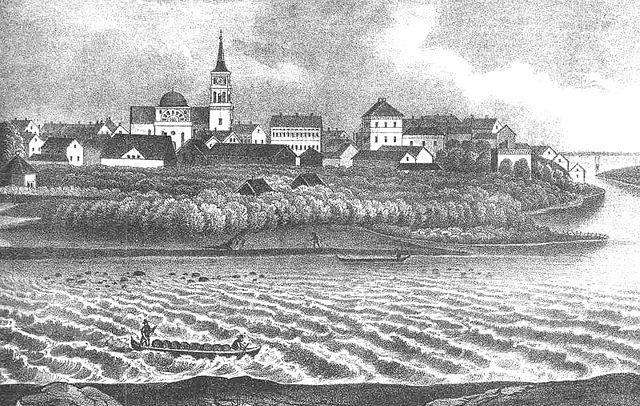 Illustration by J. Boström of Uleåborg in the middle of the 19th Century
Illustration by J. Boström of Uleåborg in the middle of the 19th Century
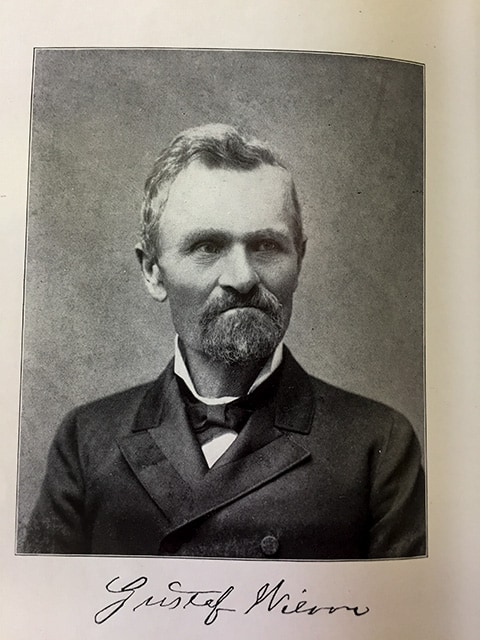 Portrait of Gustav Wilson c. 1903
Portrait of Gustav Wilson c. 1903
In 1724 the Uleåborg River flooded as it commonly does. However, a dam of debris formed that year. When it was breached the resulting flow was so powerful it formed the Toppila Inlet. The sheltered waterway was the perfect site for a harbor. Uleåborg, a town of 400, took this rare opportunity and built a harbor. By the middle of the nineteenth century the Uleåborg merchant fleet was the largest in Finland.
Gustav Wilson was a true son of Uleåborg. He was born in 1827, the son of Johan Olofsson Hemmilä, a career seaman. His mother, Anna Zachariasdotter, died when he was only eight years old. When Gustav turns fourteen he makes a logical and predictable choice to sign on as a cabin boy. Just like Uleåborg Gustav took the opportunity in front of him.
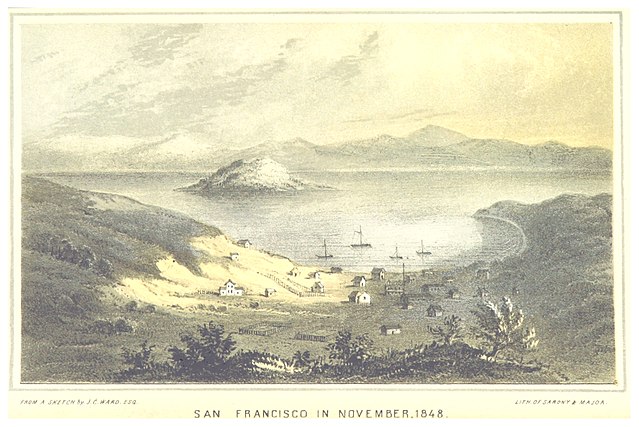
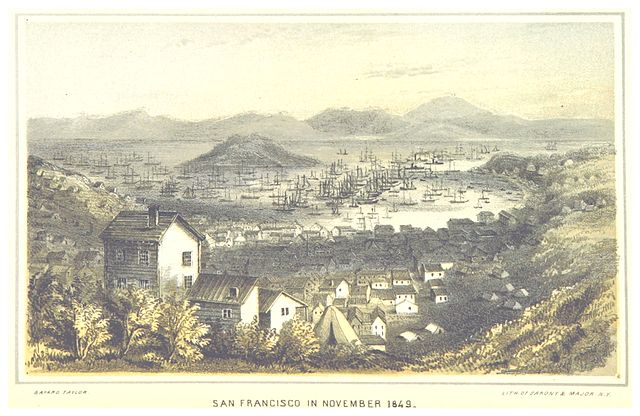
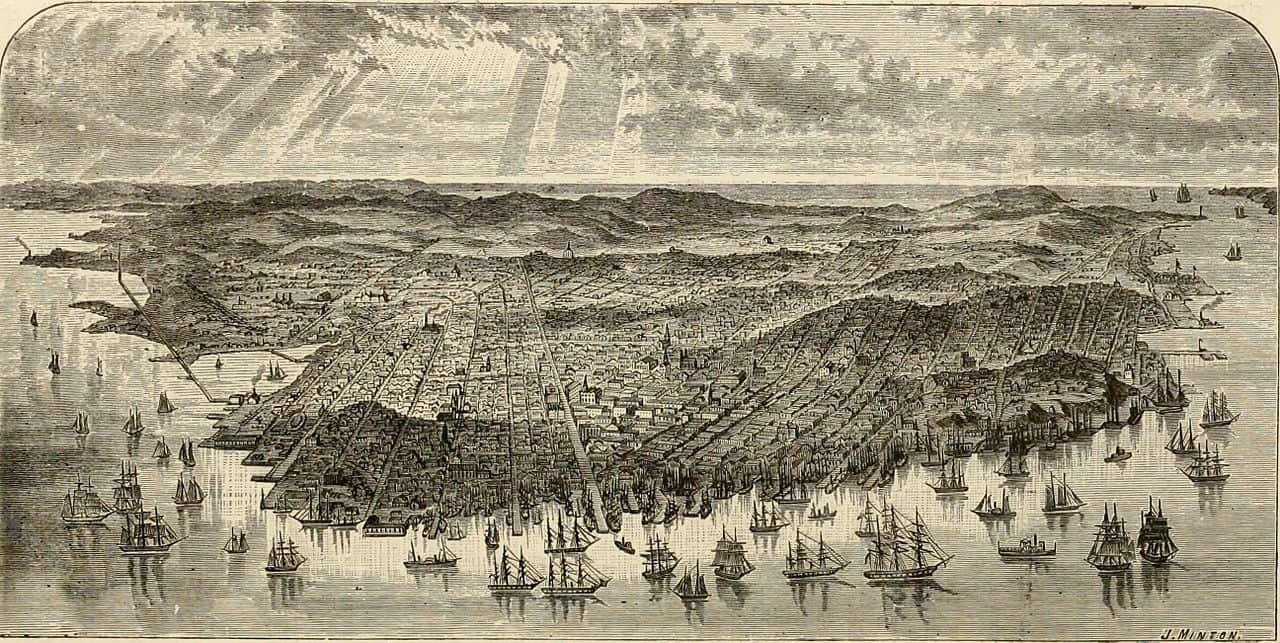 During the California Gold Rush the population of San Francisco went from 1000 to 100,000
During the California Gold Rush the population of San Francisco went from 1000 to 100,000
Gustav sees his next opportunity from the deck of the Albania. Hundreds of abandoned ships greeted them when they crossed through the Golden Gate in 1850. While the aimless boats waited for their crews to return from the gold fields some drifted aground, leaving them vulnerable to townspeople in need of lumber. Others found themselves surrounded by mounds of sand dumped by ambitious entrepreneurs to fill shallow parts of the bay. Converted ships nestled in the mud as improvised hotels. The hills of San Francisco displayed the scars of fires that regularly ate section after section of the city. Narrow streets of muck were lined with the rubble of earthquake-culled shelters. Gustav sees his new path in the unplanned streets of San Francisco.
By the time Gustav arrives in California most miners are employees of mining companies. The time for striking it rich has past so Gustav leaves California in 1852 and heads for the Oregon Territory. He settles in Jackson County in the southern part of what is today Oregon State. Within a year drought slows down mining efforts. Gustav, along with a lot of displaced miners, volunteers for the military. As soldiers they would be given regular meals and, if accepted into regular service, they would receive some payment in the future. Gustav serves twice in the military. He enlists in 1853 and again during the 1855–1856 Rogue River Wars. These military campaigns reduce the Native American population in the Rogue Valley from 9500 to 2000. More than twenty tribes are removed from their homes and forcibly relocated to the Grand Ronde Reservation and the Coastal Indian Reservation
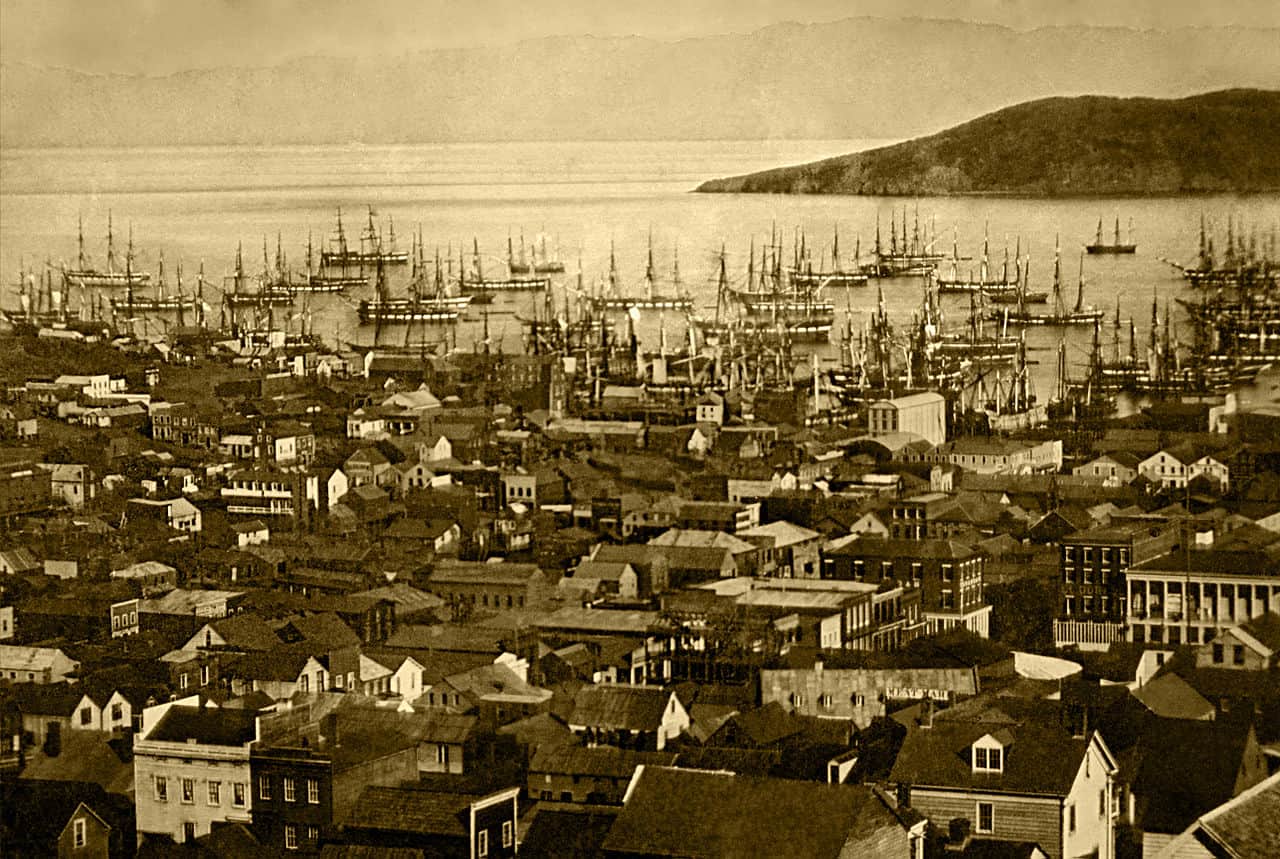 Abandoned ships floating in San Francisco Bay, 1851
Abandoned ships floating in San Francisco Bay, 1851
Gustav is called to public service in 1855 when he is appointed the coroner of Jackson County. His duties included reporting sudden deaths with reasonable grounds to suspect a crime, conduct autopsies if directed by the district attorney, conduct inquests, subpoena witnesses, restrict access to the possible crime scene, handle the burials of paupers and transients. He is elected two more terms, serving for a total of six years in this capacity. In 1862 he is elected the County Clerk of Josephine County and serves for four years.
He joins the Scottish Rite Masons in 1858. He remains an active member his entire life and rises to the 32nd degree level or Master of the Royal Secret. His involvement with masons brings him to Portland several times. Lured by possibility he moves to Portland in 1866.
To prepare himself for city life Gustav enrolls in a commercial business course. His new skills are put to use as a salesman for several mercantile establishments in Portland. Gustav even manages a flour mill in Monmouth, Oregon for a short time. More importantly Portland is where Gustav starts his family. Gustav Wilson and Christina Wideen marry in 1871. Together they build a house in Portland and adopt a daughter named Alice. When Christina passes away in 1881 Gustav rents out their house and moves his small family to a rental. Perhaps he sees a financial advantage to renting out their house or maybe the house is filled with sad memories. They never live in their home again.
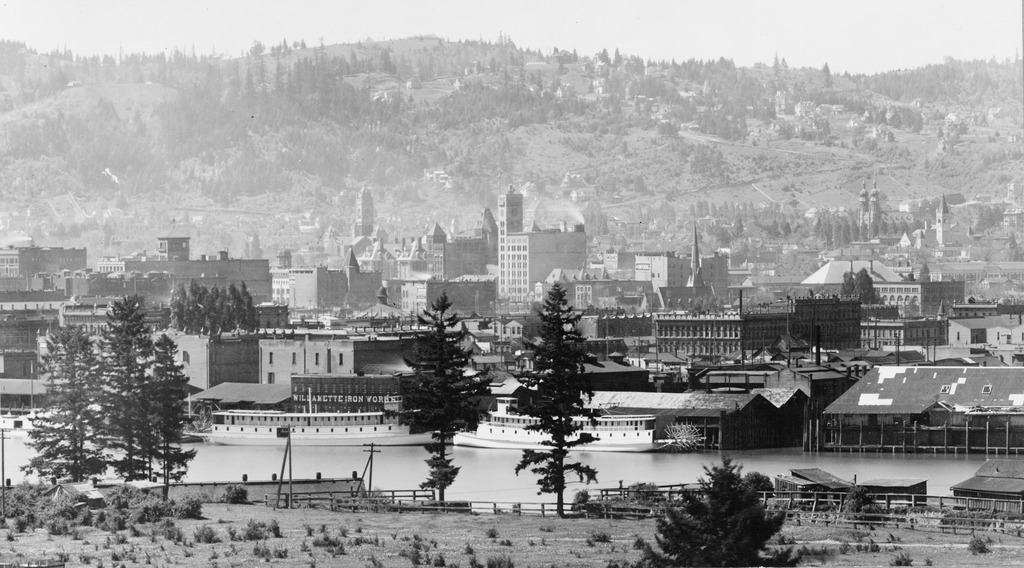 View of Portland, Oregon’s waterfront at the time Gustav served as the Vice-consul of Russia
View of Portland, Oregon’s waterfront at the time Gustav served as the Vice-consul of Russia
In 1883 Gustav is appointed Russian Vice-consul. This must have been an honor for him. When Gustav lived under Russian rule he was a cabin boy and now he was an accomplished businessman appointed to further the financial interests of Russia in Oregon. No doubt his connections made during his public office, his membership in the Scottish Rite, and his years in business made him an attractive candidate for the job. It is also evident that he built up respect in the Finnish community as well. He helps build a Finnish Lutheran church in Astoria, Oregon and is elected treasurer of a new Finnish Synod that later fails to materialize. He was also a member of the Pioneer’s Association of Oregon and the Oregon Historical Society.
Forty-six years after leaving Finland Gustav makes his first trip home. A short bio written while Gustav was still alive describes the journey in this way, “It proved a very pleasant and enjoyable trip.” Gustav Wilson passes away in 1905 at the Good Samaritan Hospital in Portland, Oregon. His funeral is held at the Scottish Rite Temple. His daughter Alice, who also studied business and followed in her father’s footsteps, is his only survivor. The earlier mentioned bio closed by describing Gustav as, “ an honored and honorable citizen of the State of Oregon.”
Bibliography
“Death of Gustaf Wilson,” The Morning Oregonian, September 22, 1905.
Hines, H.K. An Illustrated History of the State of Oregon. Chicago: The Lewis Publishing Company, 1893, p. 504.
Portrait and Biographical Record of Portland and Vicinity, Oregon. Chicago: Chapman Publishing company, 1903, pp. 303–304.
Schwartz, E. A. “Rogue River War of 1855–1856,” Oregonencyclopedia.org. Portland, OR: The Oregon Historical Society.
Silver, Helvie and Elsie. “History of Zion Lutheran Church,” Rejoice and Give Thanks. 75th Anniversary Zion Lutheran. Astoria, OR: Zion Lutheran Church, 1958, pp. 9–18.
Uleåborg Birth and Baptism Book. Uleåborg, Finland: Suomen Sukuhistoriallinen Yhdistys ry.
Uleåborg Communion Book, 1827–1833. Uleåborg, Finland: Suomen Sukuhistoriallinen Yhdistys ry., image 236.
Uleåborg Communion Book, 1834–1840. Uleåborg, Finland: Suomen Sukuhistoriallinen Yhdistys ry., image 270.